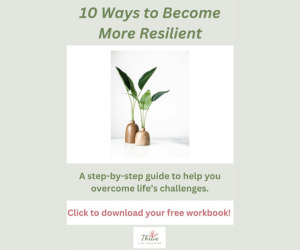According to a 2023 study conducted by the Black Dog Institute, nearly 50% of Australia’s teachers are thinking about leaving the profession.
And if you’re a teacher, that probably comes as no surprise to you.
With large class sizes, ever-increasing workloads, little to no positive affirmation from administration/parents/society, and poor work-life balance, no wonder teachers are burning out at alarming rates.
So what’s to be done about it?
It starts with you.
Now, before I lose you completely, I understand that there are larger, systemic issues at play here. But it’s also important to recognize that organizations don’t change until people change. So let’s start there.
What can you do to beat burnout for good so that you can continue serving your students in the important way that you do?
-
Identify the root cause of your burnout.
Different people experience burnout for different reasons, so it’s important to figure out what’s draining you. Is it a long commute? Documentation? Too many classes and not enough preps? Not being organized and always feeling like you’re playing catch up? Maybe it’s something even outside of work. Perhaps you’re a parent of young children, caring for a sick loved one, or you are dealing with your own health concerns. Whatever the reasons are that are leading you to feel burned out, make sure to pinpoint what they are so that you can tackle them head on.
-
Take care of YOU.
Now that you have identified what’s contributing to your burnout, it’s easier to hone in on what you need to do to take care of that area of yourself. Long commute? Perhaps this time can be used to listen to an uplifting podcast to nourish your spiritual self. Caring for a sick loved one? This may be the time to ask for help – having someone else to check in on them, make them a meal, or do some of the extra tasks that usually fall on your plate. Always feeling behind? Seek advice from a colleague who seems to be on top of things or partner with a coach to learn how to better manage the demands on your time. Whatever it is, see if you can find a solution to help minimize the burden on your shoulders so you can rest and recover.
-
Find balance.
I know – this one is hard. And part of the reason it’s hard is because it seems to change all the time. If you haven’t read my previous blog about core values, I encourage you to read it here because once you have those values identified you’ll be able to achieve better balance in your life.
-
Say no.
Most of us teachers have a hard time saying no. Perhaps it’s because we’re in a helping profession and we have empathetic hearts or perhaps we feel like we can’t say no without coming across as being selfish or not a team player. Whatever the case may be, it’s so important to recognize when we can (and should) say no to something. You can start by asking yourself the following questions: Is it required? Will it give or take away from my physical, mental and/or emotional energy? By saying no to this, what am I saying yes to? These are great starter questions to get you thinking about if something is worth saying yes to or if it’s something you can politely decline.
-
Manage time well.
We hear this one all the time, and it can be so infuriating when we have so much on our metaphorical plate because it feels like blaming us for not being able to drink out of a fire hose. But we also leave ourselves open to the constant inundation of tasks by having email notifications on, answering parent/student questions at 8 p.m., and allowing ourselves to become so overwhelmed that we end up scrolling mindlessly through our phones because that’s the only thing our brains can do at the moment. Setting up systems and setting boundaries to increase productive time and allow for protected down time as well is crucial to overcoming burnout.
-
Reframe negative thought patterns.
No one understands teaching like another teacher, and when we get into groups it’s easy to slip into complaining about what’s wrong with the system, the frustration we had that day with a student or a parent, or the crushing workload that we’re suffocating under, even on the weekends. But do we feel better afterwards? Not usually. In fact, focusing on all of the negatives and having them affirmed by others actually can make the feeling worse. So why not reframe these negative thoughts patterns and start feeling better? For example, if you find yourself thinking, “This is impossible. I’m never going to get all of this work done” you can reframe it by telling yourself, “I can get X amount of work done in the next hour and feel good about it.” Reframing negative thoughts patterns takes time and practice, but if you keep at it you’ll be amazed at how much better you feel!
-
Get support.
I can’t emphasize this one enough. Not only is so much put on us as individuals, but then we end up adding more on ourselves without even realizing it. And we can’t do it all on our own. Getting support can look like many different things. It could be sitting down with your partner and redistributing domestic responsibilities, teaming up with other families to carpool to the kids’ activities, or finally taking your friend up on their offer to take the kids to the park once a week. It could also mean partnering up with a coworker to give each other bathroom breaks during the day or having a parent volunteer decorate a bulletin board in your classroom. Other times it could mean seeking professional help by connecting with a certified counselor or coach who can support you through the journey to overcoming burnout. Whatever it looks like for you, know that there IS a way out and that you CAN feel better and start thriving instead of merely surviving.
If you’d like to learn more about how you can overcome burnout and reclaim your life and joy, I invite you to watch my free, on-demand webinar on this very topic. Simply click the link below to get started!
https://preview.mailerlite.io/preview/471792/sites/95362091919083448/hMpFZq








